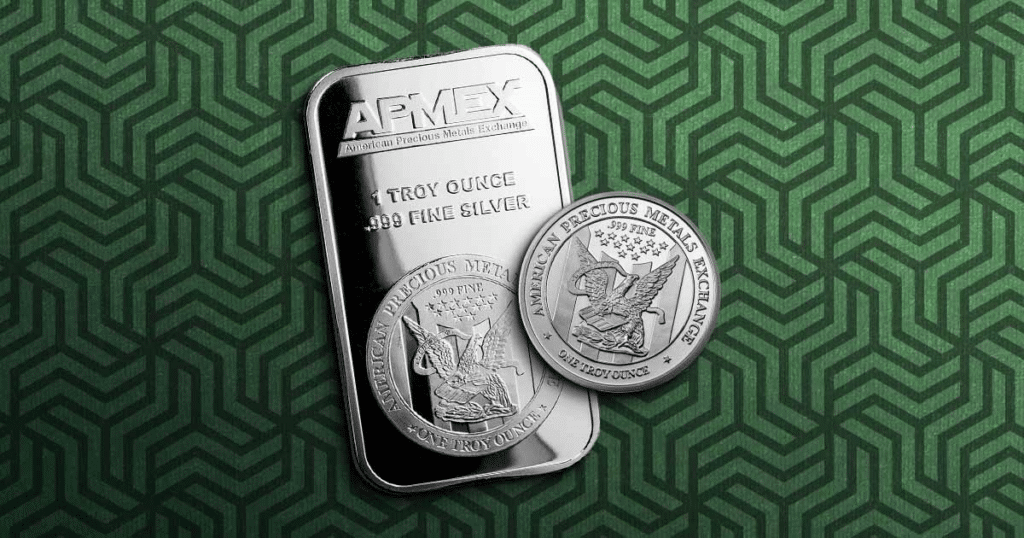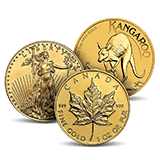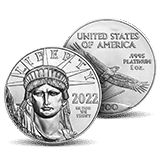
Those new to investing in precious metals may not know that an “ounce” of precious metal differs from a standard ounce. In fact, a troy ounce is heavier than a standard ounce in the U.S.
A troy ounce is a unit of measure that is commonly used in the precious metals market, including gold, silver, platinum, and palladium. Unlike the more familiar avoirdupois ounce, which is used in the United States for weighing most other goods and is equal to approximately 28.35 grams, a troy ounce is specifically used for measuring precious metals and gemstones and is equivalent to approximately 31.1035 grams. The troy ounce is heavier than the avoirdupois ounce, making it a critical distinction for investors in precious metals.
| 1 Troy Ounce | 1 Avoirdupois Ounce | |
| Weight (grams) | 31.1035 | 28.3495 |
| Where Used | Precious Metals Industries | U.S. and U.K, not for metals |
| Origination | France | United Kingdon |
| One Pound (lb.) | 12 | 16 |
Origin of the Troy Ounce
The origin of the troy ounce can be traced back to the Roman monetary system. The term “troy” is believed to come from the French town of Troyes, a major trading city in the Middle Ages. Merchants from all over Europe would come to Troyes to trade, and it became the standard system for weighing precious metals and gemstones in Europe and, eventually, worldwide. Some histories propose alternate origin theories.
Before the troy system was established, the British used an Anglo-Norman French system known as the avoirdupois system for weighing. The term “avoirdupois” translates to “goods of weight,” indicating its use for measuring precious and non-precious metal items. However, by 1527, the troy ounce was adopted as the official measurement unit for gold and silver in Britain. This standard was later adopted by the United States in 1828, marking a significant shift in how precious metals were weighed and traded.
During the Age of Discovery, the British Empire expanded its reach, colonizing and integrating vast territories into its Commonwealth. This brought the troy ounce to many countries.
The Troy Ounce in Modern Times
Currently, the troy ounce is the sole unit from the troy weights system still in use. Much like the merchants in Troyes, France, modern buyers and sellers require a reliable and standardized measurement method for precious metals.
What Market Utilizes the Troy Ounce?
The troy ounce is the standard unit of measure for quoting prices in the precious metals market. For example, gold, silver, platinum, and palladium on the global market are quoted per troy ounce. This standardization facilitates the trading of precious metals on international markets and exchanges. When investors buy gold bars, silver coins, platinum bullion, or any other form of physical precious metals, the weight of the metal is typically stated in troy ounces.
Understanding the concept of a troy ounce is crucial for new investors in precious metals. This unit of measurement is used for pricing and the minting and measurement of bars, coins, and ingots. For instance, when you buy a 1 troy ounce gold coin, you are buying exactly 31.1035 grams of gold. Investors need to be aware of this distinction to accurately assess the value of their investments and understand market prices.
One important thing to remember is that when prices for precious metals are listed as “per ounce,” it may not explicitly relate “troy ounce.” It is expected that you understand that it is a troy ounce rather than a standard ounce.
Jewlery and Gemstones
The use of the troy ounce extends beyond just the trading and investment in raw precious metals. It is also used in the jewelry industry to measure the weight of gold, silver, platinum, and gemstones used in jewelry pieces, ensuring consistency and fairness in the valuation and sale of jewelry items.
Troy Ounce vs Other Measurement Types
To help you understand what a troy ounce is, it may help to compare it to other measurements. You will also notice that precious metals are also often sold in kilograms. Grains are rarely used, but in the past, grain measurement was used in the apothecary business.
| 1 Troy Ounce | |
| Standard Ounce | 1.0971 |
| Troy Pound | 12 |
| Standard Pound | .06857 |
| Kilograms | .0311 |
| Pennyweight | 24 |
| Grains | 480 |
| Carats | 155.517 |
The troy ounce is a vital unit of measurement in the world of precious metals investing. Its use in quoting market prices, measuring the weight of bars, coins, and jewelry, and its historical origins make it a fundamental concept for new investors to understand. By familiarizing yourself with the troy ounce, you can better navigate the precious metals market, make informed decisions, and accurately evaluate their investments.





